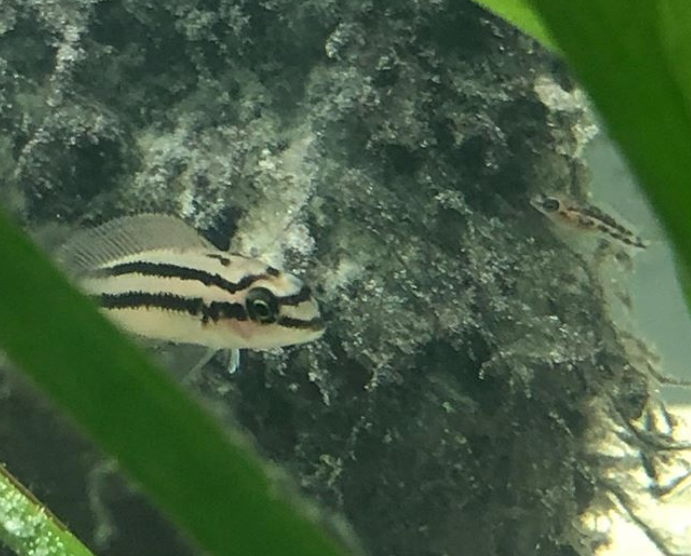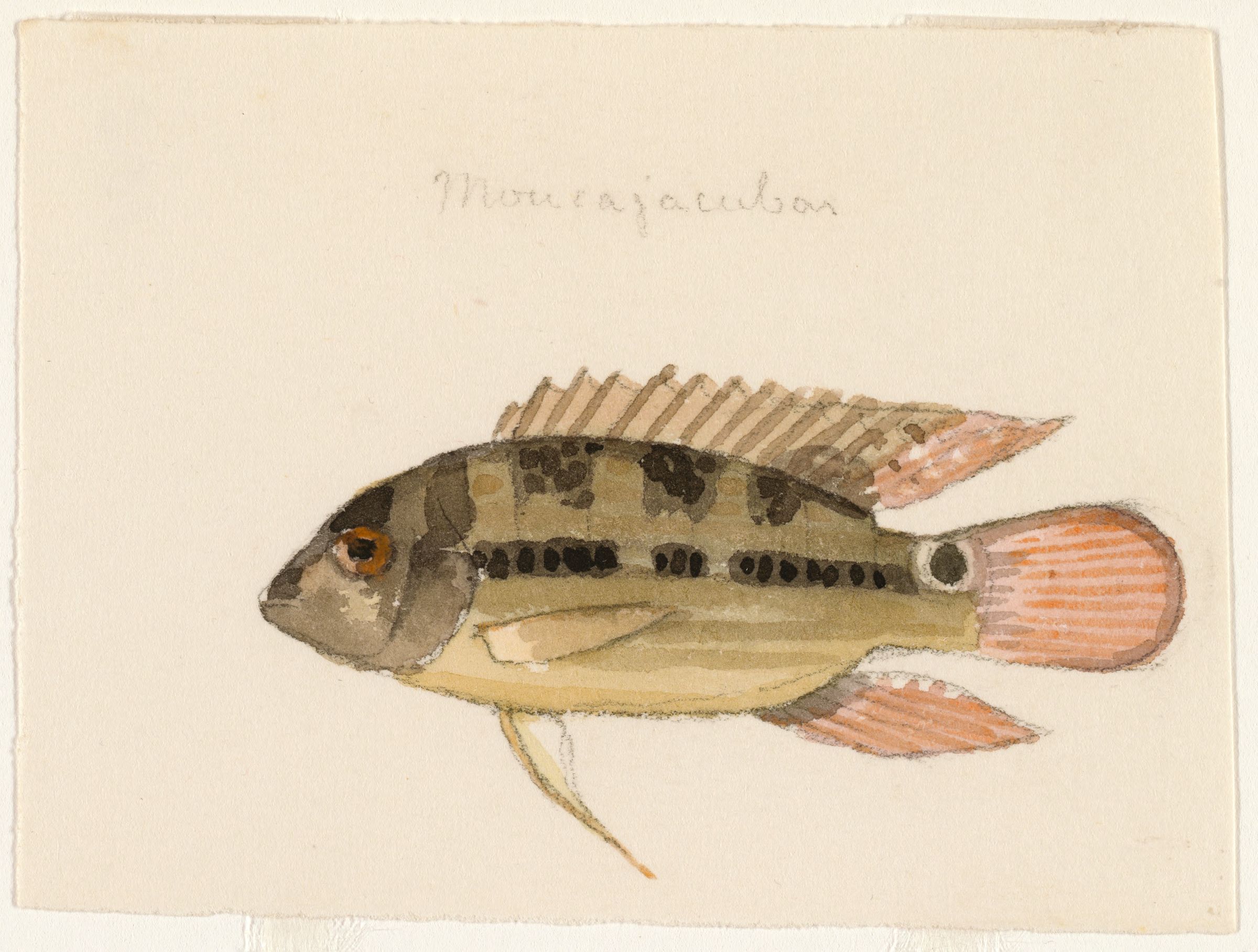|
Chalinochromis
''Chalinochromis'' is a small cichlid genus from the subfamily Pseudocrenilabrinae. These ray-finned fishes are endemic to Lake Tanganyika in the East African Rift. The scientific name refers to the bridle-like markings across the heads of members of this genus. They have specialized jaws enabling them to feed on sponges. (2007): Phylogenetic relationships of the Lake Tanganyika cichlid tribe Lamprologini: The story from mitochondrial DNA. '' Mol. Phylogenet. Evol.'' 45(2): 629–642. (HTML abstract) This genus has a puzzling relationship with the extremely similar species placed in ''Julidochromis''. In their mtDNA NADH dehydrogenase subunit 2 sequence, ''Chalinochromis'' are closer to '' J. dickfeldi'', '' J. ornatus'' and '' J. transcriptus'' – in particular the latter two – than to any other living fish, while '' J. marlieri'' and '' J. regani'' are closer to '' Telmatochromis''. ''Julidochromis'' thus might need to be split in two, with ''Chalinochromis'' includ ... [...More Info...] [...Related Items...] OR: [Wikipedia] [Google] [Baidu] |
Chalinochromis Brichardi
''Chalinochromis brichardi'' is a species of fish in the family Cichlidae. It is found in Burundi, the Democratic Republic of the Congo, Tanzania, and Zambia. It is endemic to Lake Tanganyika. It builds a nest of rubble which is hidden by plants or algae, and its diet consists primarily of invertebrates. The specific name of this fish honours the fish dealer Pierre Brichard (1921-1990), who was the collector of the type Type may refer to: Science and technology Computing * Typing, producing text via a keyboard, typewriter, etc. * Data type, collection of values used for computations. * File type * TYPE (DOS command), a command to display contents of a file. * .... Description Adult specimens average a length of approximately 8.9 cm (3.5 inches), but larger specimens up to 14 cm (5.5 inches) have been recorded in captivity. ''C. brichardi'' lacks any body striping as an adult, only possessing barring around the facial region, which differentiates it from other ''Chalinochromi ... [...More Info...] [...Related Items...] OR: [Wikipedia] [Google] [Baidu] |
Julidochromis
''Julidochromis'' is a genus of cichlids in the subfamily Pseudocrenilabrinae. They are commonly called julies and are endemic to Lake Tanganyika in eastern Africa. This genus includes six formally described species, some with a number local variants of uncertain taxonomic status. Further taxonomic work is required to determine how many species exist; the closely related '' Chalinochromis'' with two more species is sometimes included here and this may be correct. Hybridization makes attempts to determine relationships with molecular phylogenetic methods difficult. These ray-finned fish are smallish to mid-sized (about ) and have a yellowish background colour with black lengthwise stripes or a checkerboard pattern. Species There are currently 6 formally described species in this genus: * '' Julidochromis dickfeldi'' Staeck, 1975 * '' Julidochromis marksmithi'' W. E. Burgess, 2014 Burgess, W.E. (2014): ''Julidochromis marksmithi'', A New Species of ''Julidochromis'' from ... [...More Info...] [...Related Items...] OR: [Wikipedia] [Google] [Baidu] |
Cichlid
Cichlids () are a large, diverse, and widespread family of percomorph fish in the family Cichlidae, order Cichliformes. At least 1,760 species have been scientifically described, making it one of the largest vertebrate families, with only the Cyprinidae being more speciose. New species are discovered annually, and many species remain undescribed. The actual number of species is therefore unknown, with estimates varying between 2,000 and 3,000. They are native to the Neotropics, Africa (including Madagascar), the Middle East, and the Indian subcontinent, although some species have been introduced worldwide. Many cichlids, particularly tilapia, are important food fishes, while others, such as the '' Cichla'' species, are valued game fish. The family also includes many popular freshwater aquarium fish kept by hobbyists, including the angelfish, oscars, and discus. Cichlids have the largest number of endangered species among vertebrate families, most in the haplochrom ... [...More Info...] [...Related Items...] OR: [Wikipedia] [Google] [Baidu] |
Pseudocrenilabrinae
The Pseudocrenilabrinae are a subfamily in the cichlid family of fishes to which, according to a study from 2004, includes all the Middle Eastern and African cichlids with the exception of the unusual '' Heterochromis multidens'' and the Malagasy species. This subfamily includes more than 1,100 species. Previous authors recognized additional African subfamilies, e.g. the Tilapiinae of Hoedeman (1947), Tylochrominae of Poll (1986), or Boulengerochrominae of Tawil (2001). This subfamily includes the cichlids from the African Great Lakes, such as the utaka and mbuna in Lake Malawi, and various species from Lake Victoria and Lake Tanganyika. The Pseudocrenilabrinae tribes Haplochromini and Oreochromini are widespread in Africa and also found in the Middle East, while Chromidotilapiini, Hemichromini and Tylochromini are primarily West and Central African. The remaining tribes are largely or entirely restricted to Lake Tanganyika. Systematics Apart from the tribes mentioned in ... [...More Info...] [...Related Items...] OR: [Wikipedia] [Google] [Baidu] |
Lamprologini
Lamprologini is a tribe of African cichlid fishes. It contains seven genera and nearly 100 species. Over half of the species in this tribe are in the large genus ''Neolamprologus''. Most genera in the tribe are endemic to Lake Tanganyika, but one species of ''Neolamprologus'' ('' N. devosi'') is from the Malagarasi River in Tanzania, and several species of '' Lamprologus'' are from the Congo River Basin. The species in this tribe are very small to medium-sized cichlids, but vary extensively in appearance and habitat preference.Smith, M.P. (1998). Lake Tanganyikan Cichlids, p. 10—11. Unlike most Tanganyika cichlids which are mouthbrooders, Lamprologini species are substrate spawners (typically using caves or rock crevices), and some are shell dwellers. Genera * '' Altolamprologus'' (3 species) * '' Chalinochromis'' (3 species) * ''Julidochromis ''Julidochromis'' is a genus of cichlids in the subfamily Pseudocrenilabrinae. They are commonly called julies and are ende ... [...More Info...] [...Related Items...] OR: [Wikipedia] [Google] [Baidu] |
Julidochromis Regani
The convict julie (''Julidochromis regani'') is a cichlid species in the subfamily Pseudocrenilabrinae family endemic to Lake Tanganyika. Hence it is found in Burundi, the Democratic Republic of the Congo, Tanzania, and Zambia. The fish is named after Charles Tate Regan. This species is closely related to ''Julidochromis marlieri''. Possibly, a male common ancestor of these two hybrid (biology), hybridised with some female ''Telmatochromis'' ancestor in their evolutionary past. (2007): Phylogenetic relationships of the Lake Tanganyika cichlid tribe Lamprologini: The story from mitochondrial DNA. ''Molecular Phylogenetics and Evolution, Mol. Phylogenet. Evol.'' 45(2): 629–642. (HTML abstract) Description ''Julidochromis regani'' is a small (up to fish measurement, TL) ray-finned fish. Its pale to golden yellow body is slender and elongated. A varying black stripe pattern, depending on which part of the lake the fish originates from, is present. However, ''Julidochromis regani' ... [...More Info...] [...Related Items...] OR: [Wikipedia] [Google] [Baidu] |
Telmatochromis
__NOTOC__ ''Telmatochromis'' is a small cichlid genus of the subfamily Pseudocrenilabrinae. These ray-finned fishes are endemic to the Lake Tanganyika basin (mostly in the lake itself, but also its outflow river Lukuga) in Africa. Systematics Analysis of their mtDNA NADH dehydrogenase subunit 2 (ND2) sequence shows that hybridization must have played some role in the evolution of this genus. (2007): Phylogenetic relationships of the Lake Tanganyika cichlid tribe Lamprologini: The story from mitochondrial DNA. '' Mol. Phylogenet. Evol.'' 45(2): 629–642. (HTML abstract) For one thing, it might be that ''Telmatochromis'' is close to ''Julidochromis'', which they somewhat resemble. A possibility is hybridization between the ancestor of ''Telmatochromis'' and a lineage of ''Julidochromis'' which later gave rise to '' J. marlieri'' and the Convict Julie (''J. regani''). Similar ND2 DNA has been found in these and '' T. bifrenatus'', '' T. brichardi'' and '' T. temporalis''. '' T ... [...More Info...] [...Related Items...] OR: [Wikipedia] [Google] [Baidu] |
Julidochromis Transcriptus
The masked julie (''Julidochromis transcriptus'') is a species of cichlid endemic to Lake Tanganyika in Africa where it is found only along the northwestern shore preferring areas with rocky substrates. They eat zooplankton and benthic invertebrates found in the algae growth in the wild. This species reaches a length of TL. See also *List of freshwater aquarium fish species A vast number of freshwater species have successfully adapted to live in aquariums. This list gives some examples of the most common species found in home aquariums. Siluriformes, Catfish Characiformes, Characoids Cichl ... References masked julie Fish described in 1959 Taxa named by Hubert Matthes Taxonomy articles created by Polbot {{Lamprologini-stub ... [...More Info...] [...Related Items...] OR: [Wikipedia] [Google] [Baidu] |
Julidochromis Marlieri
''Julidochromis marlieri'' is a species of cichlid endemic to Lake Tanganyika where it is only known from the northwestern portion preferring rocky shorelines in deep waters. In the aquarium trade, it is commonly known as Marlier's Julie, Spotted Julie or Chequered Julie. This species reaches a length of TL. Adult females are larger than adult males. Etymology The specific name honours the Belgian zoologist Georges Marlier who collected the type. See also *List of freshwater aquarium fish species A vast number of freshwater species have successfully adapted to live in aquariums. This list gives some examples of the most common species found in home aquariums. Siluriformes, Catfish Characiformes, Characoids Cichl ... References marlieri Taxa named by Max Poll Fish described in 1956 Fish of Lake Tanganyika Taxonomy articles created by Polbot {{Lamprologini-stub ... [...More Info...] [...Related Items...] OR: [Wikipedia] [Google] [Baidu] |
Max Poll
Max Fernand Leon Poll (21 July 1908 in Ruisbroek – 13 March 1991 in Uccle) was a Belgian ichthyologist who specialised in the Cichlidae. In the years 1946 and 1947 he organised an expedition to Lake Tanganyika. He has described several species of Pseudocrenilabrinae, such as '' Lamprologus signatus'', '' Steatocranus casuarius'', '' Neolamprologus brichardi'', and '' Neolamprologus pulcher''. He was a member of The Royal Academies for Science and the Arts of Belgium, professor at the Université libre de Bruxelles, and conservator at the Royal Museum of the Belgian Congo in Tervuren. He was an honorary member of the American Society of Ichthyologists and Herpetologists. Taxon named in his honor Named after him are species and taxa In biology, a taxon (back-formation from ''taxonomy''; : taxa) is a group of one or more populations of an organism or organisms seen by taxonomists to form a unit. Although neither is required, a taxon is usually known by a particula ... [...More Info...] [...Related Items...] OR: [Wikipedia] [Google] [Baidu] |

